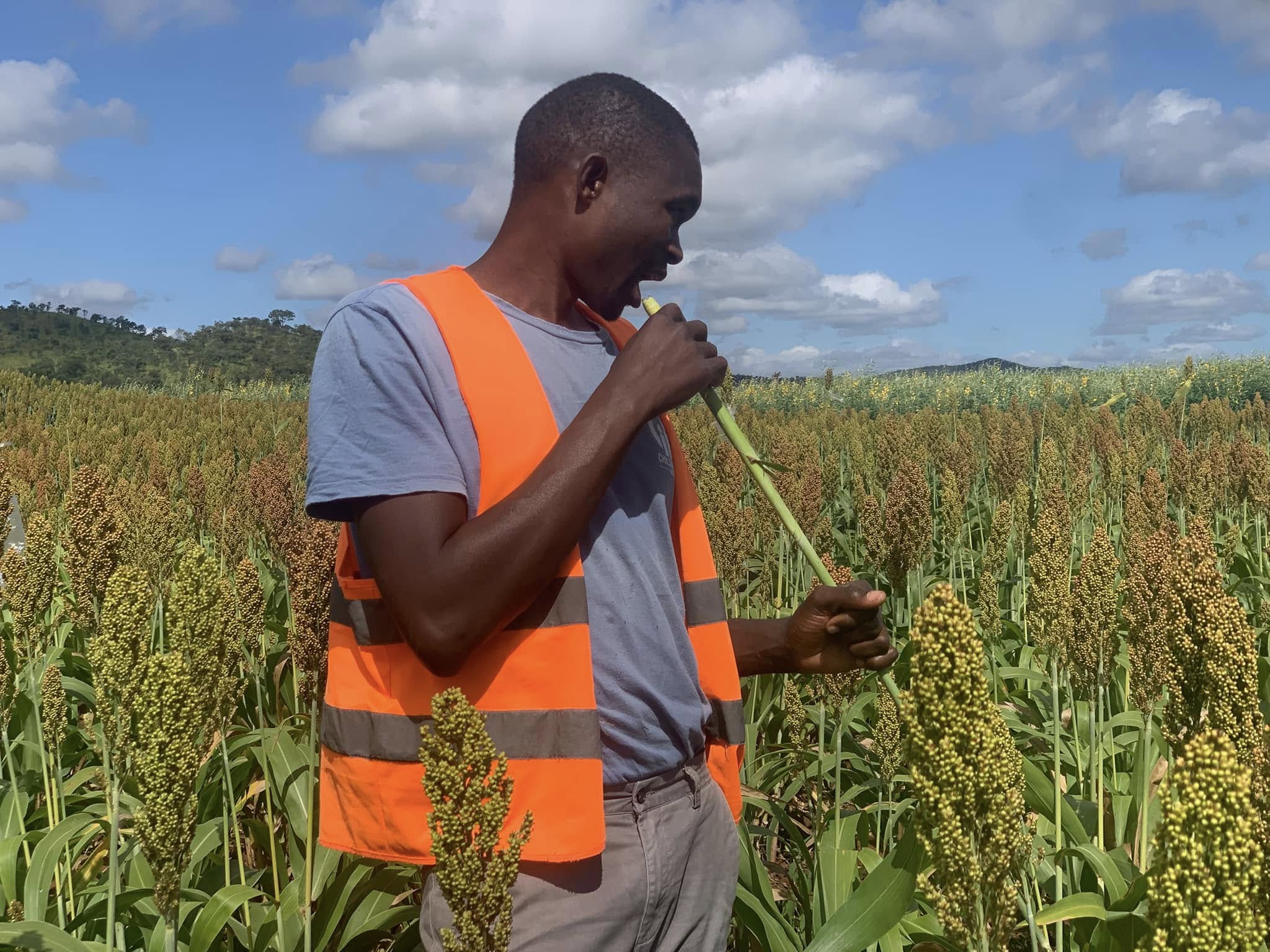
SORGHUM
Features
Sorghum has several advantages over maize (corn), especially in certain climates and growing conditions. Here are some of the key reasons why sorghum might be considered better than maize:
1. Drought Tolerance
- Sorghum is extremely drought-tolerant and can thrive in arid conditions with minimal water. It is more resilient to water stress than maize, making it a better crop for regions with water scarcity or unpredictable rainfall.
- Maize, on the other hand, generally requires more consistent water, and drought can severely impact its yield.
2. Heat Tolerance
- Sorghum can handle high temperatures better than maize. It can grow in hot climates, where maize might struggle or experience reduced yields.
- This makes sorghum ideal for regions with very high temperatures, like parts of Africa and India.
3. Nutritional Content
- Sorghum is a good source of dietary fiber, antioxidants, and B vitamins, particularly niacin. It is also gluten-free, which makes it a popular choice for people with gluten sensitivities.
- While maize is also nutritious, it tends to be lower in fiber and certain essential nutrients compared to sorghum.

4. Soil Adaptability
- Sorghum is more adaptable to poor soils and does not require as much soil fertility as maize. It can grow on less-than-ideal soils, which is a significant advantage in regions with degraded or nutrient-poor land.
- Maize typically requires more fertile soil to achieve good yields.
5. Versatility
- Sorghum is used for a variety of purposes, including food (as flour, porridge, or fermented products), animal feed, biofuels, and even in the production of alcoholic beverages (like sorghum beer).
- Maize is also versatile, but sorghum’s ability to be used in a wider variety of ways, especially in regions where it’s a staple crop, gives it an edge.
6. Pest and Disease Resistance
- Sorghum tends to be more resistant to certain pests and diseases that affect crops like maize. This can reduce the need for chemical pesticides and make it more environmentally sustainable.
- Maize can be susceptible to a variety of pests, including the notorious maize worm and corn borer, which can lead to significant crop damage.
7. Environmental Impact
- Sorghum has a relatively low environmental footprint in terms of water usage, soil degradation, and pesticide need. It requires less input in terms of fertilizers and water, which can reduce its overall environmental impact compared to maize farming.
8. Economic Resilience
- Due to its adaptability and lower input requirements, sorghum can be a more reliable crop in challenging economic conditions. Farmers in regions with irregular rainfall or difficult soil conditions can benefit from growing sorghum over maize.
- Maize often requires more investment in terms of irrigation, fertilization, and pest control, making it less economically viable in marginal areas.
9. Resilience to Climate Change
- Sorghum is well-suited to changing climates, particularly as the world faces more extreme weather patterns. It can grow in hot and dry environments, and its ability to survive under stressful conditions makes it more resilient to the effects of climate change compared to maize.
10. Lower Yield Variability
- Sorghum tends to have less yield variability in challenging growing conditions, as it is more adaptable to a range of environmental stresses. Maize, on the other hand, can experience more dramatic drops in yield during unfavorable conditions like drought.
Conclusion
Sorghum’s superior drought and heat tolerance, adaptability to poor soils, and resilience to pests and diseases make it a highly valuable crop, particularly in areas where water is scarce or where environmental conditions are harsh. While maize remains an important global crop, sorghum’s ability to thrive in more challenging environments makes it an essential alternative, particularly as climate change continues to impact global agriculture.

4 Comments